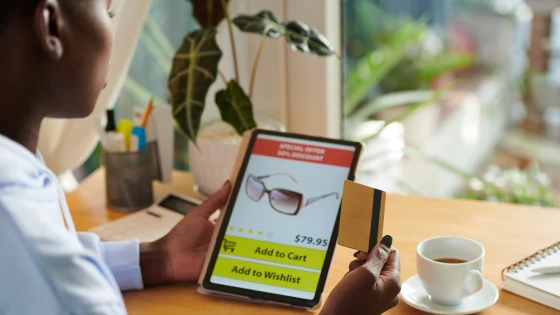The FOMO effect in marketing: Creating urgency without being pushy

The FOMO effect, or "fear of missing out," is a marketing strategy that leverages the consumer's anxiety about missing a unique opportunity.
Imagine you're browsing an online store and you see a message saying: "Only 2 units left in stock!" or "Exclusive offer for a limited time." Suddenly, you feel the need to act fast to avoid missing out. This feeling of urgency is what we call the FOMO effect.
FOMO is one of the most effective marketing strategies because it taps into emotions and triggers impulsive decision-making. However, when used aggressively or deceptively, it can generate distrust and harm a brand's reputation. So, how can you harness the power of FOMO without resorting to invasive tactics?
In this article, we’ll explain why urgency is a key tool in marketing, the most common mistakes when applying it, and effective strategies to generate FOMO without damaging consumer trust.
If you want to learn how to turn FOMO into an advantage for your business without alienating your customers, keep reading.
What is the FOMO Effect in Marketing?
Fear of Missing Out (FOMO) is a marketing technique that encourages consumers to act quickly to avoid missing a unique opportunity.
It is based on the idea that people fear missing out on limited-time experiences, products, or promotions.
Brands use FOMO to create urgency and boost conversions with tactics such as:
Limited-time offers: "Last hours of the discount"
Reduced stock: "Only 3 units left"
Exclusivity: "VIP access for the first 100 customers"
Social proof: "Thousands have already purchased this product, don’t miss out!"
Early launches: "Join the waitlist before it’s gone"
This strategy works because it taps into emotions and encourages quick decision-making, driving impulse purchases and increasing engagement with the brand.
According to socialpubli and soy.marketing, here are some statistics that reflect its impact in marketing:
69% of millennials experience FOMO, leading them to make impulsive purchases to avoid missing out on valuable experiences or products.
More than 60% of consumers have made purchases due to the fear of missing out on a special offer or promotion.
FOMO-based strategies, such as limited-time offers, stock countdowns, or exclusive promotions, can increase conversions and customer loyalty by making them feel like part of a select group.
These figures show that implementing FOMO tactics in digital marketing can deliver positive results, as long as it’s done authentically to prevent consumers from feeling manipulated.
Why Urgency is an Effective Strategy
Urgency is a psychological tactic that drives consumers to act quickly in order to avoid missing out on an opportunity. It works because it appeals to cognitive and emotional biases, such as:
The scarcity principle: When something is limited, we value it more because we feel it could run out soon.
Loss aversion: Consumers feel more pain from losing an opportunity than from not gaining it.
The immediacy bias: People prefer to receive things immediately, so they tend to make more impulsive decisions when they feel pressured by time.
In marketing:
It increases conversion rates: Customers buy before the offer expires.
It improves engagement: Users are more alert to promotions.
It fosters loyalty: Especially if exclusive offers reward repeat customers.
Be cautious with artificial urgency—if customers perceive that brands are creating a false sense of urgency, they may lose trust and feel deceived. The key is to balance the strategy with transparency and credibility.
Common Mistakes When Using FOMO in Marketing
Although the FOMO effect is a powerful strategy to increase conversions, if used in an invasive or misleading way, it can push customers away and damage a brand's reputation. Here are some common mistakes:
Creating a false sense of urgency: Don't show messages like "Only 1 unit left" when stock is high, and don't extend promotions that were supposedly ending. Be transparent with the information and use real urgency based on accurate data.
Overloading with aggressive notifications and emails: If you send multiple emails in one day with messages like "Last chance! Don’t miss out!" customers may feel pressured. Keep a balance in message frequency and segment your audience well.
Not honoring promised exclusivity: Don't advertise "Exclusive offer for VIP customers" if you're going to offer the same discount to everyone later. If you sell exclusivity, honor it. Offer real pre-sales or limited products for specific groups.
Using FOMO without a clear strategy: Implementing urgency tactics without considering the customer experience can cause frustration. Design a strategy aligned with your brand and values, ensuring that FOMO adds value and isn’t just about pressuring customers.
Not measuring the impact of FOMO on customer trust: If you use FOMO tactics all the time without analyzing their impact, some customers might respond well, but others may feel manipulated. You need to track data such as conversion rates, customer feedback, and your brand’s reputation on social media.
Properly applied, FOMO drives sales and engagement, but if it’s invasive or misleading, it generates distrust and can drive customers away. The key is to use it ethically, transparently, and with a focus on the customer experience.
4 Strategies to Create Urgency Without Being Invasive
The FOMO effect is a powerful tool, but its success depends on using it ethically and transparently. Here are four effective strategies to generate urgency without resorting to invasive tactics:
1. Limited-time offers (without misleading the customer with false urgency): People act faster when they know an offer has a real expiration date.
Effective examples: "20% off storewide until Sunday," showing a real-time countdown on the product page, or flash sales on social media with a specific time limit.
2. Exclusivity and VIP access (waiting lists, memberships): Exclusivity makes customers feel they’re accessing something special and limited.
Effective examples: Exclusive pre-sales for newsletter subscribers, premium memberships with unique benefits, or early access to products before the official launch.
3. Social proof and testimonials (using reviews and user-generated content): Seeing that others have purchased or experienced the product builds trust and speeds up the buying decision.
Effective examples: Displaying messages like "35 people have bought this product in the last hour," featuring standout customer reviews, or sharing customer stories using the product on social media.
4. Gamification (challenges, rewards, and controlled scarcity): Introducing game elements motivates customers to take action and generates engagement.
Effective examples: Challenges with limited prizes ("The first 100 to register will receive a 10% coupon"), rewards programs that expire after a set time, or progressive discounts based on how quickly customers purchase.
Well-applied FOMO generates interest and action without pressuring or deceiving customers. The key is offering real value and building long-term trust.
Companies That Use FOMO Effectively
Some brands have applied FOMO effectively in their marketing strategies. Here are a few examples:
Booking.com: Uses real-time notifications to show how many people are viewing a room or how many bookings have been made recently, creating urgency for users to book before options run out.
Amazon: Displays how many units are left in stock for a product and uses labels like "Only 3 left in stock," encouraging immediate purchases to avoid missing out.
Etsy: Implements similar strategies to Amazon, highlighting how many shoppers have added a product to their cart or how many units are available.
Nike: Uses FOMO with exclusive product launches that are limited in number, creating a sense of urgency and exclusivity among customers.
Supreme: Its business model is based on limited product launches, which creates high demand and a sense of exclusivity.
Airbnb: Displays messages like "This listing has been booked X times in the last 24 hours" or "Only X listings like this are left," subtly pressuring users to book quickly.
Apple: Each new iPhone launch is accompanied by a strategy of controlled scarcity, making customers feel the need to buy it before it sells out.
These brands apply FOMO strategically without being invasive, leveraging scarcity, exclusivity, and urgency to drive conversions ethically and effectively.
Why Use FOMO in Marketing?
FOMO is an effective strategy because it leverages consumer psychology to encourage immediate action. In a world filled with options, customers often postpone their purchasing decisions. By creating a sense of real urgency, brands can reduce indecision and increase conversions.
Additionally, FOMO generates exclusivity and desire. When a product or service seems limited or exclusive, consumers perceive it as more valuable. This not only boosts sales but also strengthens the brand’s image.
Another key benefit is the impact on engagement. Strategies such as VIP access, time-limited discounts, and exclusive launches encourage audience interaction with the brand, boosting loyalty and recognition.
However, for FOMO to work in the long term, it must be applied ethically and transparently. If artificial urgency is overused, customers may lose trust in the brand. The key is balancing urgency with a genuine value proposition.
When used correctly, FOMO not only drives sales but also enhances the relationship with customers and reinforces the brand's identity.


